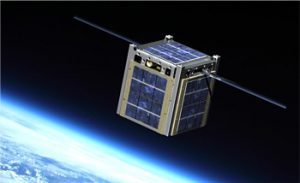 EIAST, in partnership with American University of Sharjah (AUS), launched the UAE’s first CubeSat Mission, Nayif 1, on November 4. CubeSat is a Nanosatellite that offers hands-on experience to engineering students in the design, integration, testing, and operation of a communications satellite.
EIAST, in partnership with American University of Sharjah (AUS), launched the UAE’s first CubeSat Mission, Nayif 1, on November 4. CubeSat is a Nanosatellite that offers hands-on experience to engineering students in the design, integration, testing, and operation of a communications satellite.
The CubeSat is scheduled to be launched on board a Falcon 9 rocket by the end of 2015 where a ground station will be built at AUS and operated by Emirati engineering students, responsible for mission planning and operations.
The CubeSat development program, the first of its kind in the UAE, aims at investing and developing capabilities of Emirati engineering students in space technologies. A group of Emiratis consisting of seven students from various engineering disciplines at AUS, including computer engineering, electrical engineering and mechanical engineering, have been assigned to the project. Students will go through an intense systems design and testing training and will partake in the program as their Senior Engineering Design project and participate in the design, assembly, integration and testing of the CubeSat. Nayif-1 will carry out a 1U Communication Mission with development taking place in AUS, EIAST’s facilities and Delft in the Netherlands.
The project will be carried out in partnership with the implementation partner “Innovative Solutions in Space”, one of the leading companies worldwide in the development of space components and NanoSatellite Systems. EIAST will take on the role of the integrator in the process and ensure that all necessary processes are in place to preserve and build upon the experience gained. Its objective will be to put in place all the necessary infrastructure at the University for a CubeSat development program between the implementation partner and AUS’s Emirati students.
Nayif-1 will integrate engineering student expertise and capabilities with the expertise, capabilities and resources from UAE industry, government and academia, which is a typical integration cycle in all KBEs, to build and launch CubeSat Mission.
Yousuf Hamad Al Shaibani, Director General of EIAST commented on the launch and stated, “this program plays a significant role in developing the Science and Technology sector in the UAE through investing in local talents and capabilities. We expect to have significant involvement of Emirati engineering students with the outcome being a UAE built and owned CubeSat. The program will also aid in establishing the necessary infrastructure at a UAE university to enable an ongoing university satellite program, preparing undergraduate, and later on, post graduate students to enter the UAE’s space technology industry with firm practical knowledge in all disciplines of Satellite Systems Engineering”.
A CubeSat is of standardised and simplified design with an average dimension of 10 cubic centimetres (referred to as “one unit” or “1U”). Its weight is less than or equal to 1 kg; allowing it to be accessible and easily managed by students. CubeSats can also be scaled along one axis by 1U increment so that “2U” refers to CubeSat dimension of 20*10*10 cm and “3U” to 30*10*10 cm dimension.
CubeSat usually utilises commercial, off-the-shelf components for development and is mainly operated by educational institutes for scientific research purposes. With simple infrastructure, design procedure, available components, and open launch opportunities, CubeSats have become popular in the space industry and an area of interest to educational institutes and governments. Above all, they are cost-effective and an independent means of getting payloads into orbit for learning, testing and verifying space systems.












Add Comment